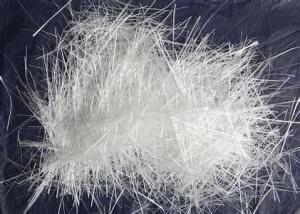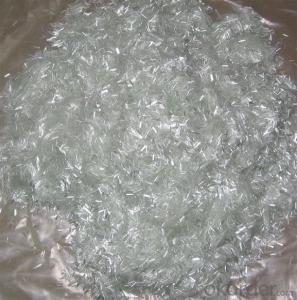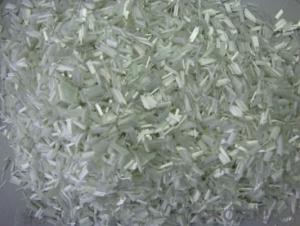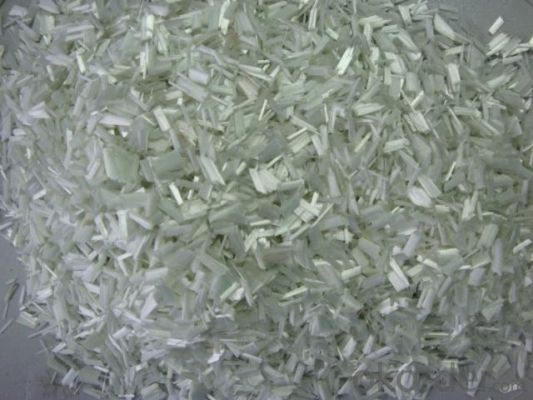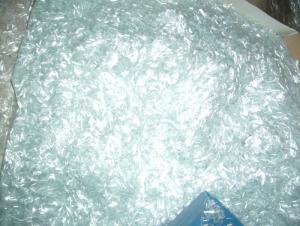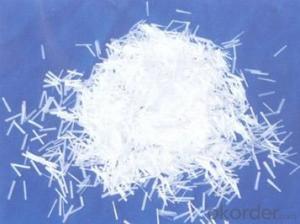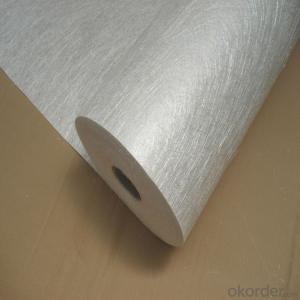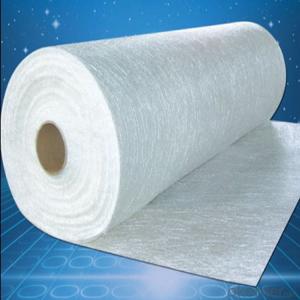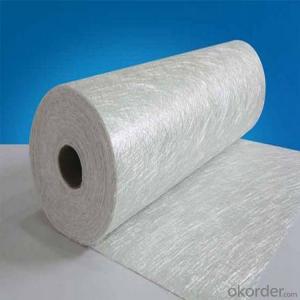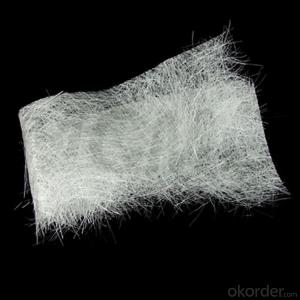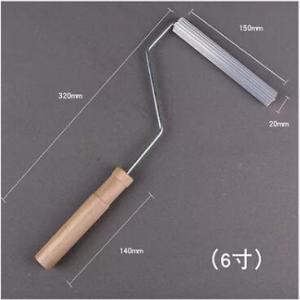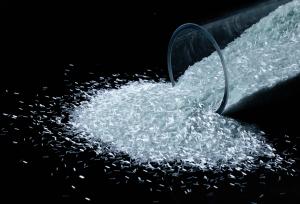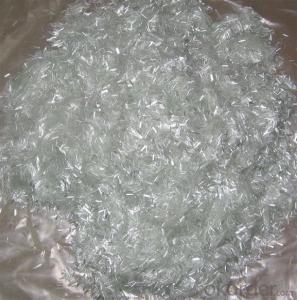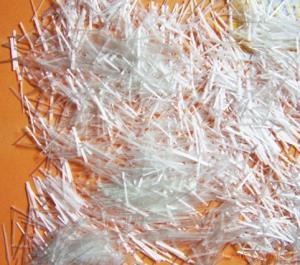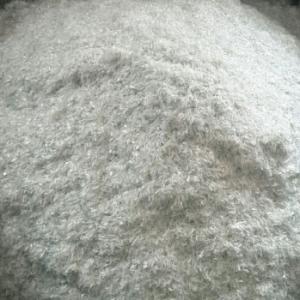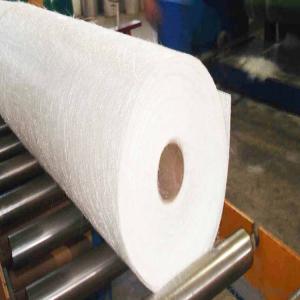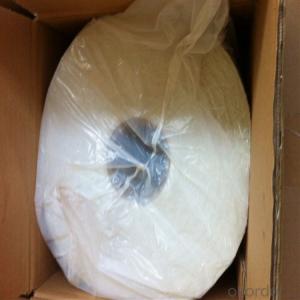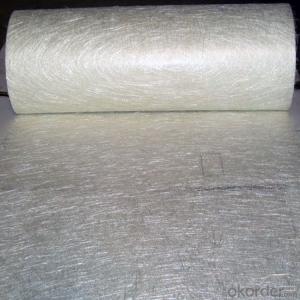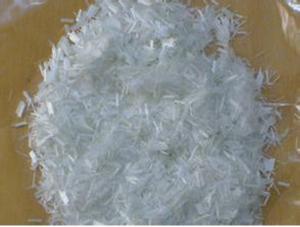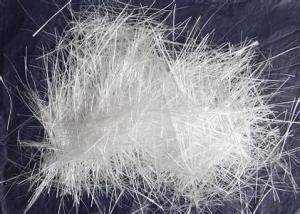E-glass Fiber Chopped Strands For BMC Usage
- Loading Port:
- Shanghai
- Payment Terms:
- TT or LC
- Min Order Qty:
- 20000 kg
- Supply Capability:
- 200000 kg/month
OKorder Service Pledge
OKorder Financial Service
You Might Also Like
DESCRIPTION:
E Glass Fiber Chopped Strands for BMC Usage are compatible with unsaturated polyester, epoxy resin and phenolic resins.
The end-use applications include transportation, building & construction, electronic & electrical, mechanical, and light industry.
Product Features:
Extremely low resin demand, delivering low viscosity to BMC paste
High impact strength; High LOI rate
High strand stiffness; Compatible with rubber
Product Specifications:
Property | Fibre diameter | Moisture Content | Size Content | Chop |
(%) | (%) | (%) | (%) | |
Mathods | IS01888 | ISO3344 | ISO1887 | |
3mm | ±10 | ≤3.0 | 0.1±0.05 | 98 |
6mm | ||||
9mm | ||||
12mm |
Special specification can be produce according to customer requirements.
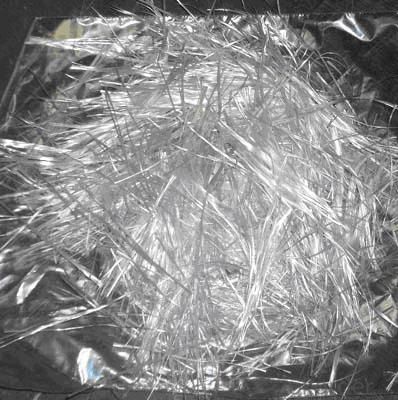
Packaging:
Each bag can be taken (15-25kgs)。 Could also take a big container bag.
Storage:
Unless otherwise specified, It should be stored in a dry, cool and rain-proof area. It is recommended that the room temperature and humidity should be always maintained at 15℃~35℃ and 35%~65% respectively.
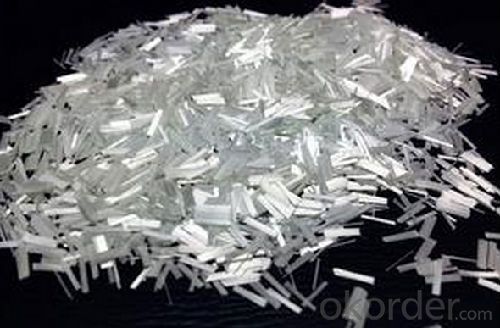
FAQ
1..Is your company a factory or trade company?
A:We have our own factory , we are on this business more than 10 years.
2.Who will pay for the express cost ?
A: We can support you free samples ,but express cost will be paid by you .
3.How long is the delivery time?
A:within 10-15 days after receiving deposit.
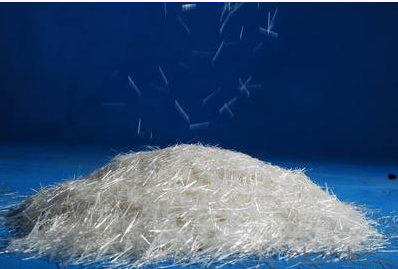
- Q: Is fiberglass chopped strand compatible with different post-processing techniques?
- Yes, fiberglass chopped strand is compatible with different post-processing techniques. It can be used in various processes such as compression molding, injection molding, and filament winding. The versatility of fiberglass chopped strand allows for its integration into different manufacturing methods and applications.
- Q: How does the fiber dispersion affect the viscosity of chopped strand composites?
- Fiber dispersion refers to the distribution and arrangement of fibers within a composite material. In the case of chopped strand composites, the fibers are randomly oriented and dispersed throughout the matrix. The fiber dispersion plays a significant role in determining the viscosity of the composite material. When the fibers are well dispersed, meaning they are evenly distributed and separated within the matrix, it leads to a higher viscosity of the composite. This is because the fibers create a network-like structure that impedes the flow of the matrix material. The random orientation of the fibers also increases the resistance to flow, resulting in a higher viscosity. On the other hand, if the fiber dispersion is poor, with fibers clumped together or not evenly distributed, it reduces the viscosity of the composite. The clumping of fibers creates gaps and voids in the material, allowing the matrix to flow more freely. The reduced resistance to flow decreases the viscosity of the composite. In summary, fiber dispersion has a direct impact on the viscosity of chopped strand composites. Well-dispersed fibers increase viscosity by creating a network-like structure and increasing resistance to flow, while poor fiber dispersion reduces viscosity by allowing the matrix to flow more freely through gaps and voids.
- Q: How does the moldability of the chopped strand affect its performance?
- The moldability of the chopped strand has a significant impact on its performance. The moldability refers to the ability of the chopped strand to conform and adapt to the shape of the mold during the manufacturing process. When the chopped strand has good moldability, it can be easily molded into complex shapes with intricate details. This allows it to be used in a wide range of applications where precise molding is required, such as automotive parts, aerospace components, and consumer goods. On the other hand, if the chopped strand has poor moldability, it can result in various performance issues. It may not fully conform to the mold, leading to gaps, voids, or uneven distribution of fibers. This can compromise the structural integrity and strength of the final product. Additionally, poor moldability can make it difficult to achieve consistent and uniform thickness, resulting in dimensional inaccuracies and variations in the finished product. Therefore, the moldability of the chopped strand is crucial in ensuring the overall performance and quality of the final product. By selecting a chopped strand with good moldability, manufacturers can achieve better structural integrity, dimensional accuracy, and overall performance in their molded products.
- Q: How is the weathering resistance of fiberglass chopped strand composites tested?
- The weathering resistance of fiberglass chopped strand composites is typically tested through exposure to various environmental conditions, such as UV radiation, extreme temperatures, moisture, and chemical agents, over a specified period of time. This testing is often done using accelerated weathering chambers or outdoor exposure racks to simulate real-world conditions and determine the composite's durability and resistance to degradation.
- Q: What are the typical moisture absorption characteristics of chopped strand composites?
- Chopped strand composites typically exhibit excellent moisture absorption resistance due to the nature of their construction. The chopped strand mat or fabric used in these composites is typically made from glass fibers or other high-performance materials that have inherently low moisture absorption properties. Additionally, the matrix material used in the composite, such as a resin or polymer, is often chosen for its hydrophobic nature, further reducing moisture absorption. This combination of low moisture absorption fibers and hydrophobic matrix material results in chopped strand composites that are highly resistant to moisture absorption. In practical terms, this means that these composites are less likely to experience dimensional changes, warping, or degradation when exposed to moisture or high humidity environments. However, it is important to note that the moisture absorption characteristics of chopped strand composites can still vary depending on the specific materials used and the manufacturing process employed. For instance, if the composite is not properly sealed or has defects in its structure, it may be more susceptible to moisture absorption. Additionally, certain types of resins or fibers may have higher moisture absorption rates than others. In general, though, chopped strand composites are known for their low moisture absorption characteristics, making them a popular choice for applications where moisture resistance is important, such as in marine, automotive, or construction industries.
- Q: Is fiberglass chopped strand suitable for the production of marine components?
- Yes, fiberglass chopped strand is suitable for the production of marine components. Fiberglass is known for its excellent strength-to-weight ratio, corrosion resistance, and durability, making it ideal for marine applications. Chopped strand refers to the short fibers of fiberglass that are mixed with a resin to form a composite material. This type of fiberglass is commonly used in the construction of boats, yachts, and other marine components. Fiberglass chopped strand offers several advantages for marine applications. Firstly, it provides high tensile strength and stiffness, allowing for the production of lightweight yet strong components. This is essential for marine vessels and structures, as they need to withstand the harsh conditions of saltwater, waves, and impacts. Additionally, fiberglass chopped strand has excellent resistance to corrosion and deterioration caused by exposure to water and sunlight. This ensures that marine components made from fiberglass will have a longer lifespan and require less maintenance compared to other materials. Furthermore, fiberglass chopped strand can be easily molded into various shapes and sizes, allowing for the production of custom marine components. It can be used to manufacture hulls, decks, bulkheads, and other structural parts. The versatility of fiberglass chopped strand also enables the integration of other materials or reinforcements for specific requirements. Overall, fiberglass chopped strand is a suitable material for the production of marine components due to its strength, corrosion resistance, durability, and versatility. It offers numerous advantages that make it a popular choice in the marine industry.
- Q: How is fiberglass chopped strand used in the sports and leisure industry?
- Fiberglass chopped strand is commonly used in the sports and leisure industry for its strength, durability, and lightweight properties. It is used in the manufacturing of various sporting equipment such as kayaks, canoes, surfboards, and skis. The chopped strands are typically mixed with resin and molded into the desired shape, resulting in a robust and high-performance product. Additionally, fiberglass chopped strand is also utilized in the production of leisure items like pool slides, water park structures, and recreational vehicles, providing a strong and long-lasting construction material.
- Q: Can fiberglass chopped strand be used in electrical insulation coatings?
- Indeed, electrical insulation coatings can make use of fiberglass chopped strand. Fiberglass, being a versatile material, possesses exceptional electrical insulation characteristics, rendering it appropriate for a wide range of electrical applications. By incorporating fiberglass in its chopped strand form, coatings can effortlessly acquire reinforcement, thus enhancing their electrical insulation capabilities. The incorporation of chopped strands not only augments the coating's mechanical strength and resistance to cracking, but also furnishes it with thermal stability and resistance to moisture. In conclusion, fiberglass chopped strand stands as a dependable choice to ameliorate the electrical insulation properties of coatings utilized in electrical applications.
- Q: How does fiberglass chopped strand enhance the strength of composites?
- Fiberglass chopped strand is commonly utilized in the production of composites to enhance their strength. It accomplishes this through various mechanisms. To begin with, the composite material benefits from the tensile strength provided by the randomly dispersed strands. These strands function as individual fibers that effectively resist stretching and pulling forces. Consequently, the stress is evenly distributed throughout the composite, preventing concentration in a single area and subsequent material failure. Furthermore, the high aspect ratio of the fiberglass chopped strand contributes to the composite's stiffness. The long, thin strands create a substantial surface area for bonding with the matrix material. This facilitates the transfer of load between the matrix and reinforcement, resulting in increased stiffness and dimensional stability of the composite. Moreover, the random orientation of the fiberglass chopped strand within the matrix creates an interlocking effect, bolstering the composite's impact resistance. This three-dimensional network aids in absorbing and dissipating energy upon impact, preventing cracks or fractures from propagating through the material. Consequently, the overall toughness and durability of the composite are improved. Additionally, fiberglass chopped strand plays a significant role in enhancing the fatigue resistance of composites. By acting as barriers to the growth of microcracks, the fibers prevent their propagation and the subsequent occurrence of catastrophic failures. This property is particularly valuable in applications where cyclic loading or vibrations are prevalent. In conclusion, fiberglass chopped strand enhances the strength of composites through its provision of tensile strength, improvement of stiffness, enhancement of impact resistance, and increase in fatigue resistance. These properties render it a valuable reinforcing material in various industries, including automotive, aerospace, construction, and marine.
- Q: Can fiberglass chopped strand be used in the production of construction panels?
- Construction panels can utilize fiberglass chopped strand as a reinforcement material, resulting in enhanced structural integrity and durability. This material is composed of randomly oriented glass fibers that are bound together with a binder. By mixing these strands with various resins, such as polyester or epoxy, a composite material is formed that possesses strength, lightness, and resistance to environmental factors. Incorporating fiberglass chopped strand into the production process of construction panels improves their strength, stiffness, and resistance to bending and cracking. Additionally, it enhances impact resistance and dimensional stability, ensuring the panels can withstand different loads and environmental conditions. Moreover, fiberglass chopped strand contributes to the fire resistance and thermal insulation properties of the panels. The glass fibers act as a barrier against heat transfer, reducing the risk of fire spreading and improving energy efficiency. To summarize, utilizing fiberglass chopped strand in the manufacturing of construction panels offers numerous advantages, including increased strength, durability, fire resistance, and thermal insulation. Therefore, it is a suitable material choice for the production of these panels.
Send your message to us
E-glass Fiber Chopped Strands For BMC Usage
- Loading Port:
- Shanghai
- Payment Terms:
- TT or LC
- Min Order Qty:
- 20000 kg
- Supply Capability:
- 200000 kg/month
OKorder Service Pledge
OKorder Financial Service
Similar products
Hot products
Hot Searches
Related keywords
